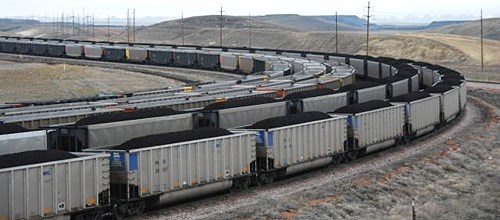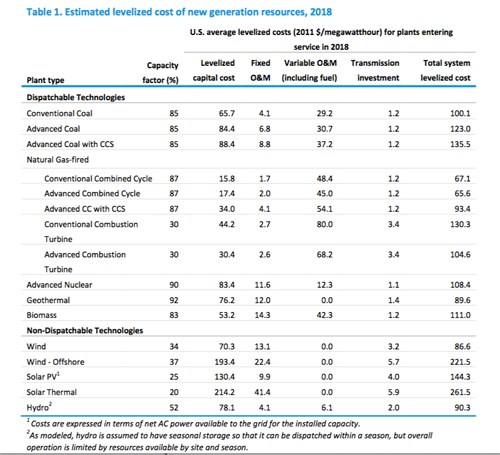Wind, coal and the cost of energy
The U.S. Congress is considering extending the renewable energy production tax credit, which bodes well for wind turbine manufacturers. But despite wind's dropping costs, we still live in a world oriented toward and dependent on coal for electricity.

The cover story from the April 2014 issue of Wired magazine is an interesting exploration of the role of coal in the world's energy future. Provacatively titled, "Renewables aren't enough. Clean coal is the future," the story, written by Charles C. Mann, points out that, like it or not, many countries (particularly China and the U.S.) still rely greatly on coal for energy generation; Further, despite the promise of wind, solar, and hydro, none of those technologies is ready to replace coal. Mann goes on, as well, to explore carbon capture systems (CCS) for coal-fired power plants and argues that CCS is a global necessity in order to make coal palatable from an environmental perspective. The article is a highly pragmatic assessment of the global energy situation and, as such, has provoked much feedback — positive and negative.
Meanwhile, in Washington, D.C., the U.S. Congress raised a few eyebrows this week when it proposed to reinstate several federal tax incentive programs, including the renewable energy production tax credit (PTC). (See our PTC news story for more information). The PTC has been around for years and offers wind farm developers a tax credit for every kilowatt-hour of energy generated. The PTC has been credited for much of the wind energy growth seen in the U.S. over the last decade, and the last one expired at the end of 2013. The Senate wants to renew it, retroactive to Jan. 1, 2014 and expiring Dec. 31, 2015. A vote is expected later this year.
Looming over both of these issues — our need for coal energy and wind energy tax credits — is an even broader question: How will the cost of energy generation affect society's energy source choices? Since renewable energy systems came online, they've been handicapped by their high cost, but in the last few years wind, solar and hydroelectric energy have become cost competitive, and in some cases (compared to coal, ironically), cost advantageous.
The U.S. Energy Information Administration (EIA) estimated last year, in its "Levelized Cost of New Generation Resources in the Annual Energy Outlook 2013" that, come 2018, wind energy, without the PTC, will cost less than every type of coal-based energy system, and less than some natural gas-based energy systems.

Of course, it's not enough to be cheaper. The truth is that it would take millions of wind turbines to replace the energy generated by coal-based systems. In addition, as the "Capacity factor" column shows in the above table, the wind does not always blow. And we do not yet have a reliable, large-scale energy storage system that allows us to capture excess wind energy when the wind does blow. Which takes us back to the Wired article and the pragmatic need now, and and for many years to come, for coal-based energy systems.
Renewables offer much promise and hope for a cleaner energy future, but for now much of the world must continue to live and cope with the reality of coal.
Related Content
-
Hexagon Purus Westminster: Experience, growth, new developments in hydrogen storage
Hexagon Purus scales production of Type 4 composite tanks, discusses growth, recyclability, sensors and carbon fiber supply and sustainability.
-
Plant tour: Middle River Aerostructure Systems, Baltimore, Md., U.S.
The historic Martin Aircraft factory is advancing digitized automation for more sustainable production of composite aerostructures.
-
ASCEND program update: Designing next-gen, high-rate auto and aerospace composites
GKN Aerospace, McLaren Automotive and U.K.-based partners share goals and progress aiming at high-rate, Industry 4.0-enabled, sustainable materials and processes.









.jpg;maxWidth=300;quality=90)






